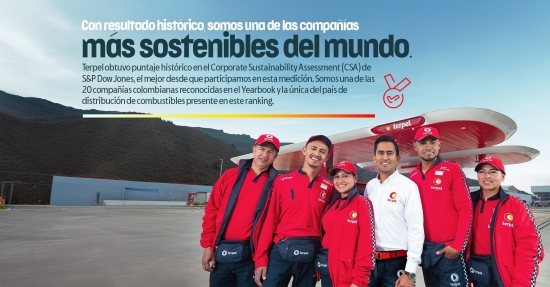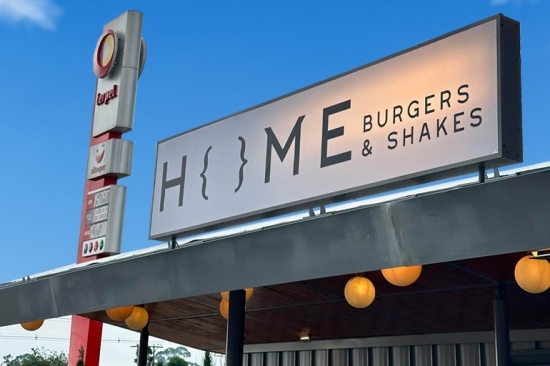
Terpel opens the first LPG service station in Colombia
26 Apr, 2021
- Terpel's entrance into the LPG market is based on its commitment to be the source of every kind of energy Colombians need to keep them moving around the country.
- During 2021, after inaugurating the first station in Cartagena that meets Colombian regulations for this product, Terpel plans to expand its LPG network to include cities such as Bogota and Medellin.
- Liquefied petroleum gas (LPG) is an alternative energy source characterized by its low particulate matter emissions, excellent mileage, and low cost.
Organización Terpel opened the first service station to supply liquefied petroleum gas (LPG) to the public in Colombia. This launch is part of a business strategy to create incentives for the large-scale use of LPG in the country - based on its environmental benefits and low cost - and to guarantee the supply of every energy source available for keeping Colombians on the move.
The company will initially provide this service in Cartagena, at the Doña Manuela station, followed by expansion to Bogota and Medellin, and subsequent inclusion of other cities in the nation.
LPG, also known as autogas, is a blend of propane, butane and other gases in smaller proportions. It is characterized by its excellent mileage, low cost, and reduced emissions of particulate matter. Classified as a transition fuel, it has become a widely-used energy source around the world, used by an estimated 27 million vehicles according to the World LPG Association.
“By opening this first station in Colombia, we can say with pride that we are the only company in the country to offer every source of energy Colombians need to stay on the move: liquid fuel, CNG, LPG, and electric energy. At Terpel we will continue to innovate with the services we offer so we can meet the needs of our consumers and stay on the cutting edge of world energy trends," stated Johand Patiño, Vice President of Sales at Terpel.
The company's announcement comes just days after the Ministry of Mines and Energy approved the regulations that open the way to the use of LPG for ground and river transportation. It was previously approved only for cooking and heating homes, and represented just 2% of the total energy used by the nation.
“The entrance of LPG into this vehicle segment will no doubt benefit both drivers and the environment. In the first case, owners will see savings from 30 to 35%, while enjoying the same power and mileage of a gasoline engine. LPG-powered cars also have a long range, because 40 liters of fuel allow a vehicle to travel approximately 140 km. Meanwhile, the environmental benefits are great, because it produces 81% fewer particles, and 21% less CO2, thanks to its cleaner combustion process," added Patiño.
The company also announced a plan for the conversion of 600 vehicles, leading the way to large-scale use of this energy source by the nation's vehicles. In Mexico, close to 250,000 vehicles already use this type of fuel, while in Peru that figure is 287,000, and in Chile there are 20,000 LPG cars.
- 1. GASNOVA. (2019). Report on the LPG sector. Available at: http://www.gasnova.co/wp-content/uploads/2019/08/INFORME-DEL-SECTOR-DEL-GLP-2019.pdf
- 2. This savings figure is not a promotion; it is an indicator of savings and corresponds to the retail prices managed by Terpel-owned service stations at month end, prior to the publication of this press release. (At no time are sums of money handed over based on the referenced savings indicator). The calculation was made using the average prices for AutoLPG for the month of January 2021; this press release is valid from May 1 to May 31, 2021. The percentage savings from the use of AutoLPG versus regular gasoline is multiplied by an average estimated daily consumption of $40,000 of fuel. The result of the calculation is the money that can be saved daily by a vehicle converted to LPG as long as it is always filled with AutoLPG instead of with regular gasoline. (1 gallon of regular gasoline is equivalent to 4,769 liters of AutoLPG).
- 3. Actual savings and benefits depend on the type of vehicle/engine, weather conditions, road conditions (type of terrain) and vehicle operating conditions.
- 4. Results obtained in a test performed by the WLPGA (World LPG Auto Organization), with vehicles that were properly maintained and operated, and in optimum conditions.
- 5. Agremgas (2019). Autogas, carburante hacia futuro (Autogas, fuel for the future). Available at: http://agremgas.com/autogas-carburante-hacia-futuro/
- 6. Abastible (2017). Abastible estrena en Chile nueva tecnología de conversión a GLP vehicular y potencia este combustible para transporte (Abastible launches new technology in Chile for the conversion to LPG for vehicles, promoting this fuel for transportation). Available at: https://www.abastible.cl/
Other news
Terpel reafirma su liderazgo en sostenibilidad con puntaje histórico al ser incluida en el anuario global de la sostenibilidad de S&P Dow Jones
Terpel es una de las 20 empresas colombianas que fueron incluidas en este ranking global, y la única del sector de distribución de combustibles que alcanza este reconocimiento, lo que demuestra el compromiso de la organización y el trabajo del equipo Terpel para seguir impulsando y movilizando a las personas, a las empresas y al país con la mejor energía.
06/03/2025
El Sello de Terpel en el Carnaval de Barranquilla
Una vez más, Terpel se unió a la pasión de los colombianos en la celebración de las ferias y fiestas del país. Por eso, en esta ocasión la emblemática estación de servicio puso un toque de creatividad, sabor, energía, baile y música para conquistar las calles de la arenosa en su temporada festiva.
12/03/2024


